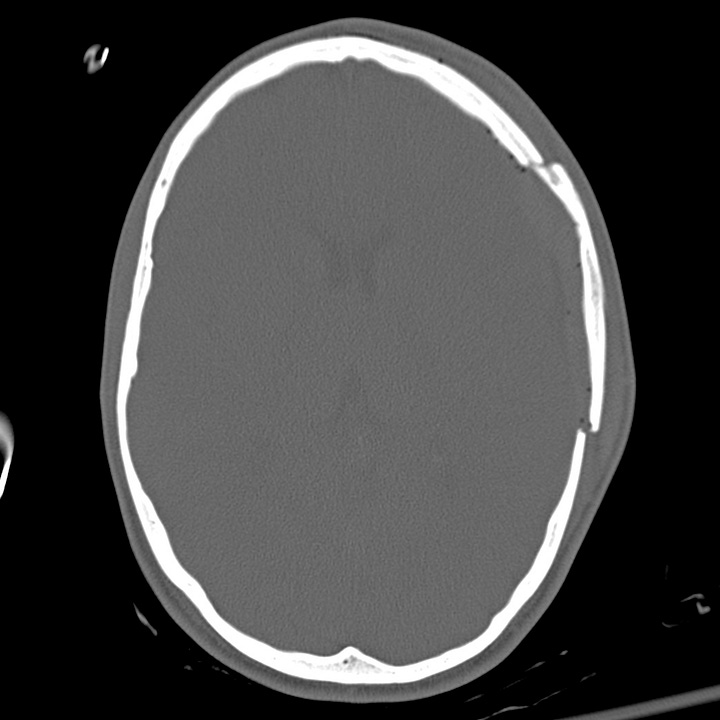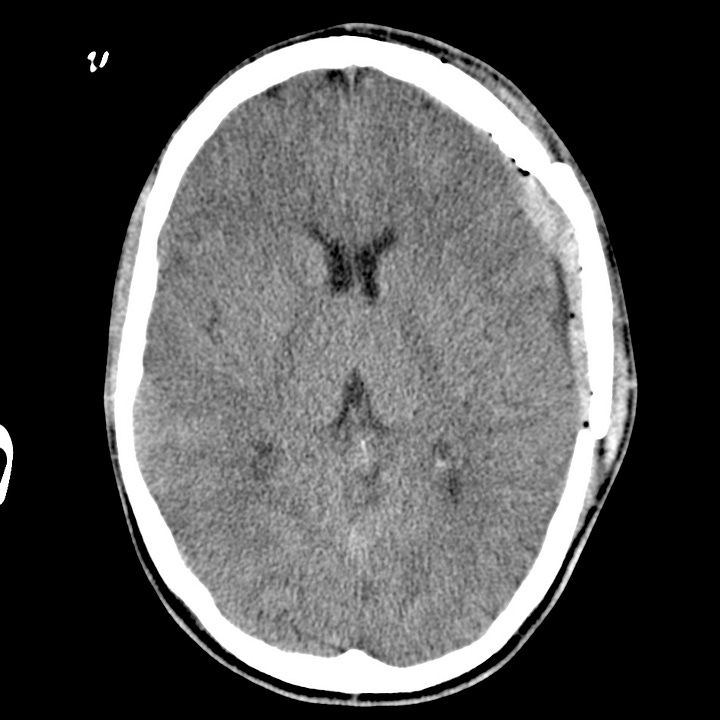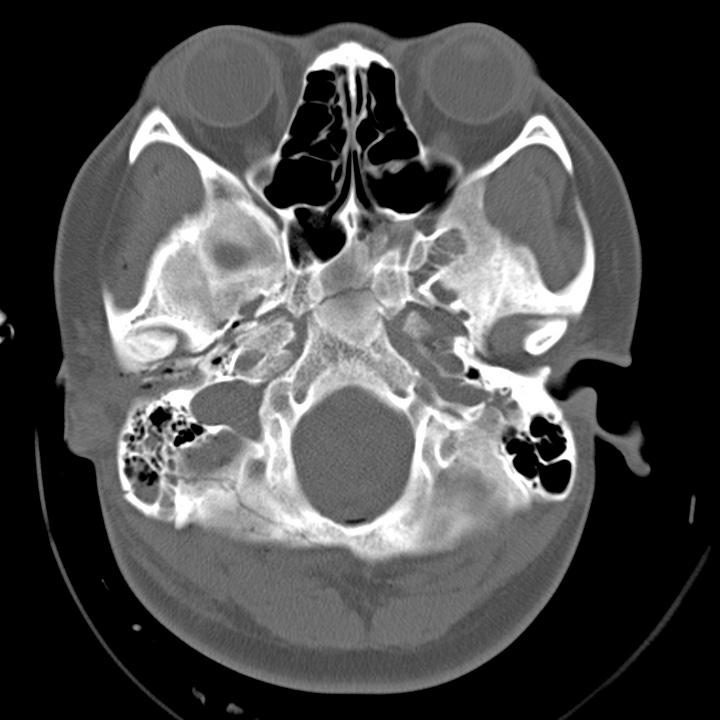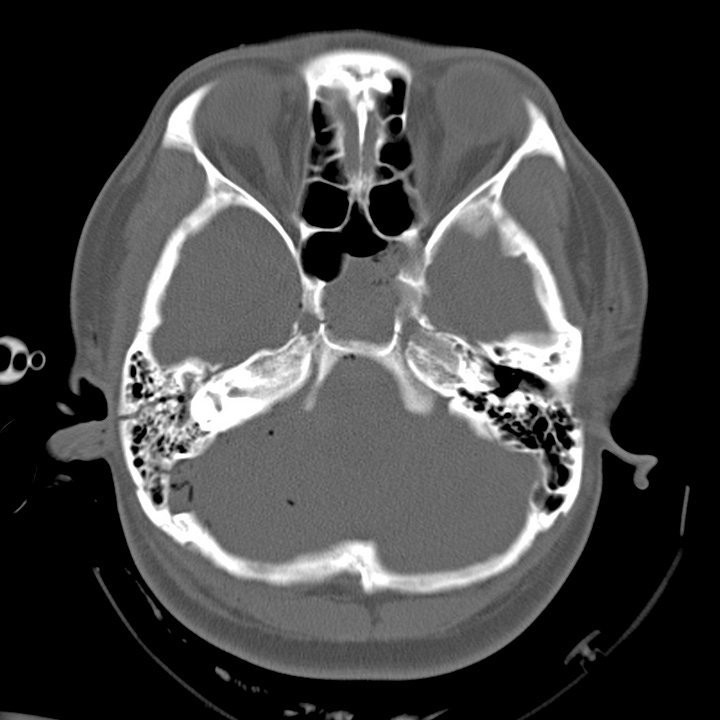Most skull base fractures are identified on noncontrast head CT obtained for evaluation of head trauma. Plain radiographs alone are primarily obtained for localization of superficial foreign bodies or in circumstances where CT is unavailable. They are insufficently senstive or specific to diagnose or exclude significant brain injury by themselves.
Calvarial fractures that are depressed more than 5 mm are elevated surgically and are well-characteized on multidetector CT with 3D reformations. Fractures that traverse the course of the middle meningeal artery may be associated with epidural hematoma. Skull base fractures indicate high-energy trauma and more severe brain injury; the most common locations include the petrous temporal bone, the basiocciput, the sphenoid bone, and the ethmoid bone.


Calvarial fracture. Left frontal calvarial fracture with small subjacent epidural hematoma and minimal intracranial air. The fracture fragment is elevated one-half calvarial width relative to the remainder of the skull.
Fractures that traverse the carotid canals or cavernous sinus indicate significant energy transfer and can be associated with carotid or vertebral injury, including dissection and pseudoaneurysm. Vascular endothelial injury can lead to clot formation and places the patient at increased risk for secondary embolic cerebral infarct, which can be prevented with anticoagulation. Because of this risk, CT angiography with helical thin-section imaging is generally advised in this group.
Anterior skull base fractures traverse the paranasal sinuses and orbit, and they can disrupt the cribriform plate and optic canals. Clinical consequences include CSF rhinorrhea, periorbital ecchymosis (“rac- coon eyes”), and olfactory or optic nerve damage.
Trauma to the central skull base, usually from lateral impact, results in petrous temporal bone fractures and may be associated with CSF otorrhea, hemotympanum, mastoid ecchymosis (“Battle sign”), facial nerve palsy, vertigo, tinnitus, and conductive or sensorineural hearing loss.


Skull base fracture. Nondisplaced longitudinal right temporal bone fracture that traverses the basi- sphenoid (clivus) and basiocciput. Blood is present in the sphenoid sinus and the right mastoid air cells. A small amount of air is present in the posterior fossa.
Fractures through the clivus can injure the sixth cranial nerve. Posterior skull base fractures that disrupt the dural venous sinuses can result in posterior fossa epidural hematoma, dural venous sinus thrombosis and venous infarct.
Epidural abscess, cerebritis and brain abscess are potiential complication of any obviously open skull fracture or a fracture that involves the ethmoid roof, posterior frontal sinus wall, mastoid air cells, or the aerated petrous apex.

